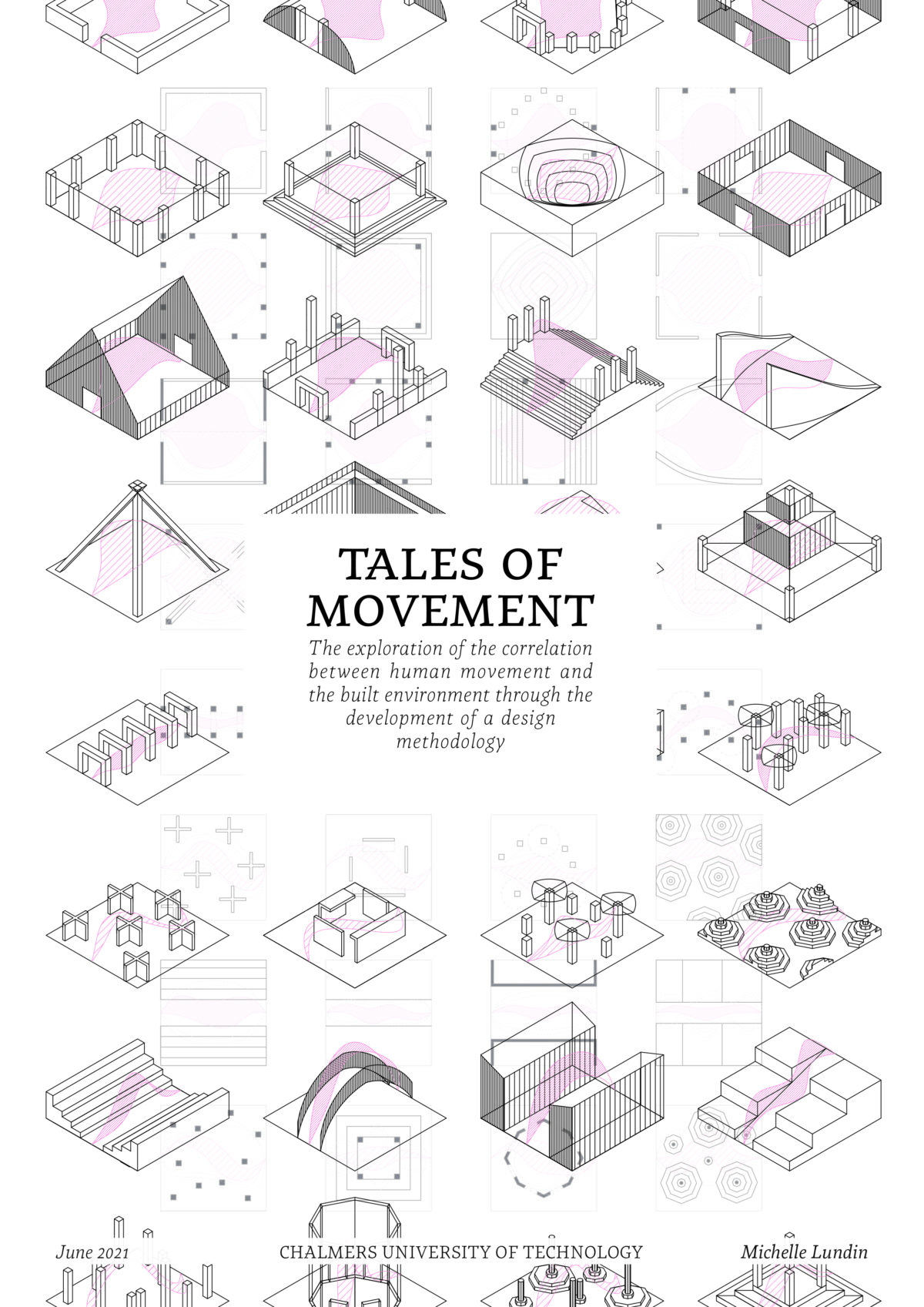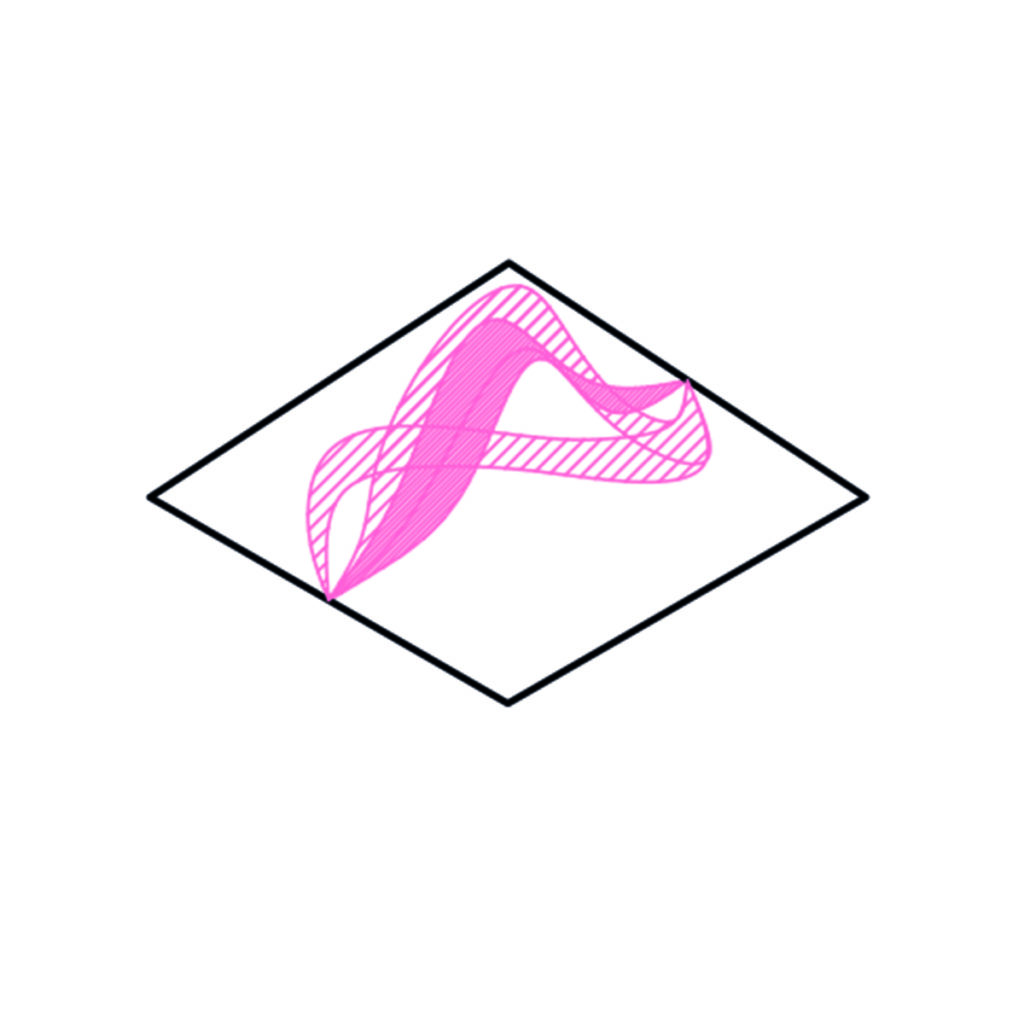
Travelling threads
How can we measure movement when sketching?
Visualizing movement can be done quite straightforward with numbers and figures as long as you have statistics from reality to back it up with. Things get more complex when you try to visualize the movement in a theoretical space as an architect often must do. You have the parameters that are objective to a certain degree, like inclination, sound, illumination and size of obstructions and clearings. Then you have parameters that are affected more by culture and personal preferences, like colours, texture and tactility. I have therefore tried to break it down to the fundamentals in my design studies of movement and focused on the composition of elements in relation each other.
Arne Branzell makes a statement in his book, On the bubble, on when people meet objects, ”Your movement in a room may often confirm the message of its architectural space. A little drama, tension arises when spaces around persons and objects do not coalesce, when a gesture or movement is opposed by the messages of the object. ” (p.18, 2013). The first design study, Travelling Threads, explores this notion of what message the architecture sends to the visitor by merely existing as extrusions and clearings. It is possible to analyse different rooms according to our experience of the design. What kind of movement are generated by certain spaces? And reversely, what kind of spaces can be generated from certain movement? The study develops into a sketching method based on analytical perceptions of a space, with the aim of creating a tool that can have the designer/s start with the question, What kind of movement do I want at this specific place?
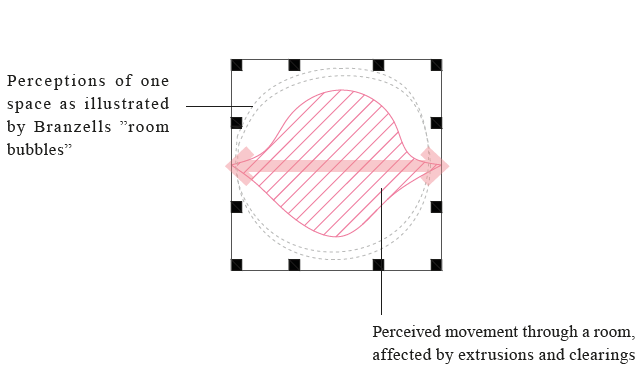
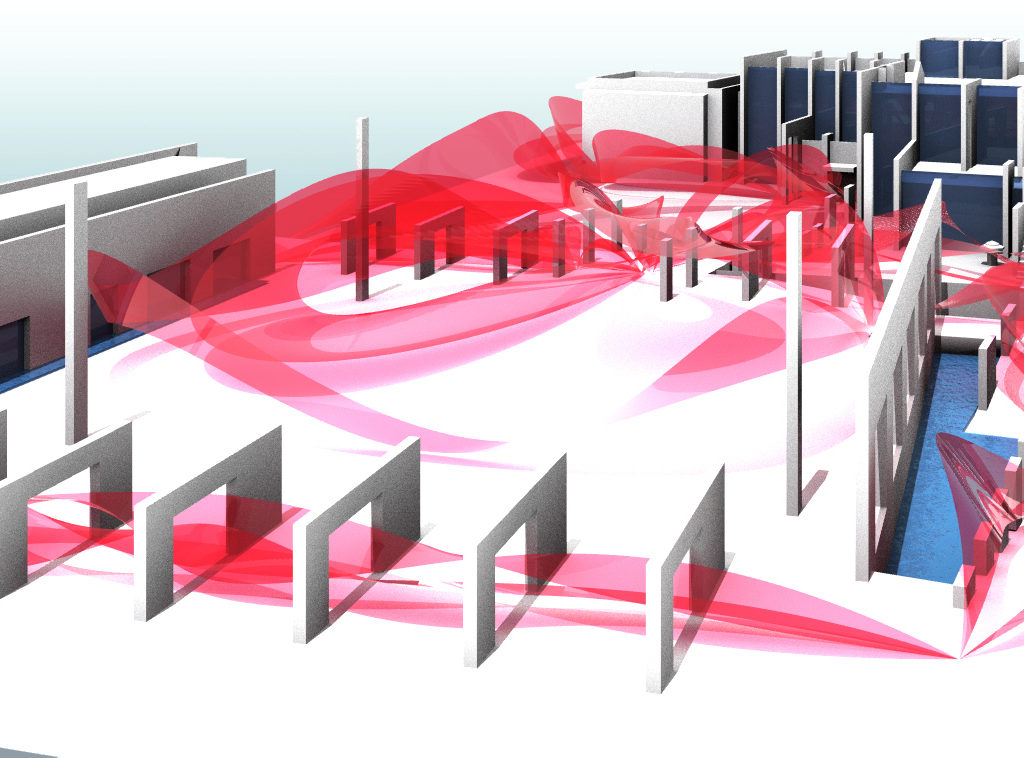
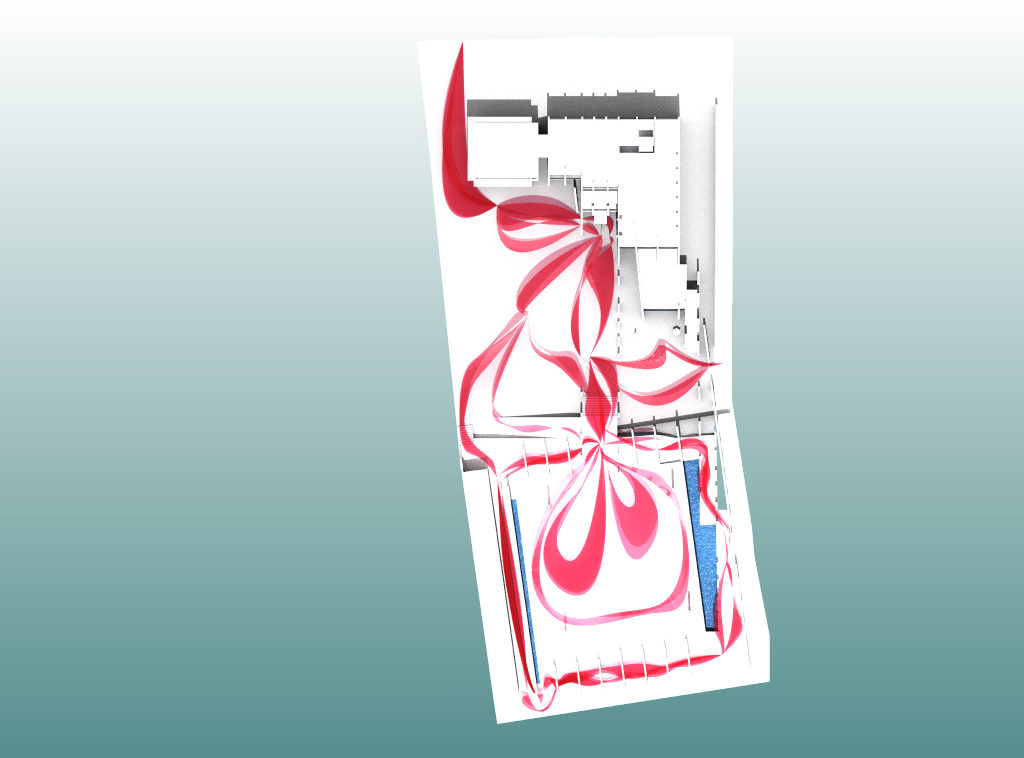
Travelling threads imply exploring the spatial composition of spaces and how they create movement, both physical and mental. By drawing lines that each represent a unique journey through the space, the journey is affected by how the architecture draws on the visitor’s attention.
The physical red shapes of movement can both represent actual movement as well as possible movement. I interpret the movement as flowing through time and space. Like how the threads are all one path taken beside each other in parallel universes, but with different choices being made at each crossing. Hence you end up with a higher flow in certain spaces when overlaying the possible routes. The more colourful the threads are, the more you are coerced to move in a certain direction because of the built environment. The thinner they are the higher freedom you have to move however.
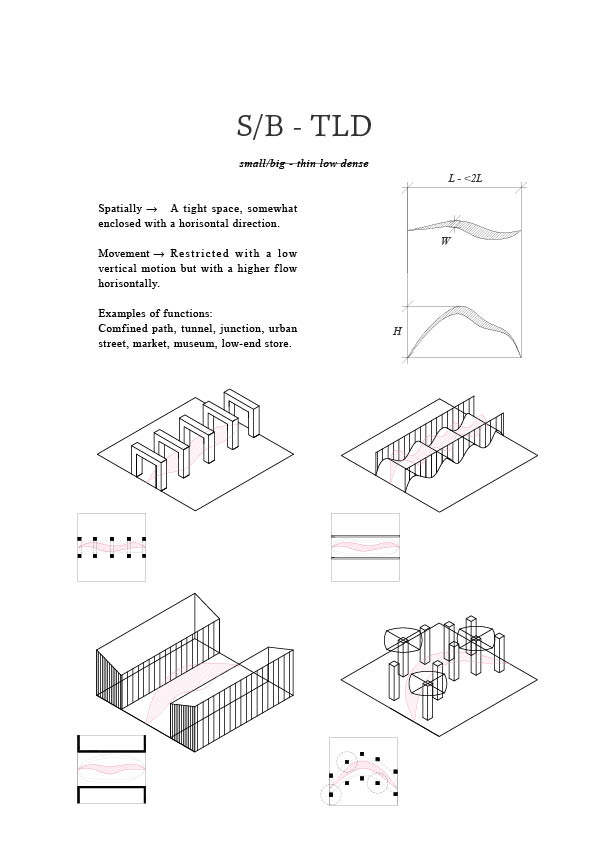
The attributes of the perceived movement required different sorts of spaces.
Height of thread shows verticality of perceived movement. It is affected by how closed off a space is and how high the surrounding extrusions are.
Density of the colour of the thread– shows strength of flow. It is affected by openings and extrusions.
Width of thread– shows freedom of movement horizontally. It is affected by openness of space.
Sketching different kinds of spaces that had the similar spatial qualities as the analysed movement led to a plethora of different models that were tested in the final design.


